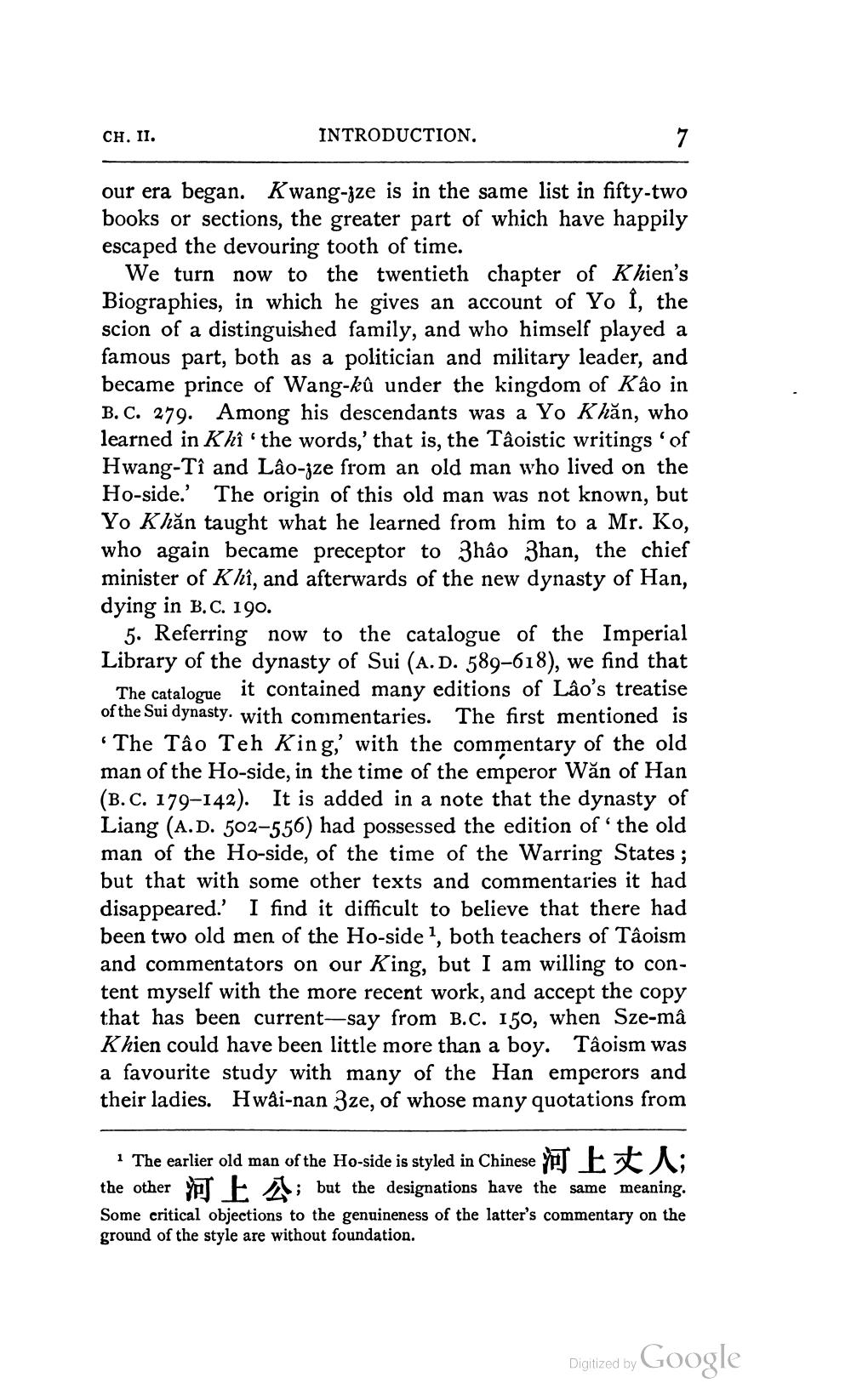________________
CH. II.
INTRODUCTION.
our era began. Kwang-jze is in the same list in fifty-two books or sections, the greater part of which have happily escaped the devouring tooth of time.
We turn now to the twentieth chapter of Khien's Biographies, in which he gives an account of Yo I, the scion of a distinguished family, and who himself played a famous part, both as a politician and military leader, and became prince of Wang-kû under the kingdom of Kao in B.C. 279. Among his descendants was a Yo Khăn, who learned in Khî the words,' that is, the Taoistic writings of Hwang-Tî and Lâo-zze from an old man who lived on the Ho-side. The origin of this old man was not known, but Yo Khăn taught what he learned from him to a Mr. Ko, who again became preceptor to Zhâo Zhan, the chief minister of Khî, and afterwards of the new dynasty of Han, dying in B.C. 190.
5. Referring now to the catalogue of the Imperial Library of the dynasty of Sui (A. D. 589-618), we find that
The catalogue it contained many editions of Lâo's treatise of the Sui dynasty. with commentaries. The first mentioned is · The Tâo Teh King,' with the commentary of the old man of the Ho-side, in the time of the emperor Wăn of Han (B.C. 179–142). It is added in a note that the dynasty of Liang (A.D. 502-556) had possessed the edition of the old man of the Ho-side, of the time of the Warring States; but that with some other texts and commentaries it had disappeared.' I find it difficult to believe that there had been two old men of the Ho-side 1, both teachers of Taoism and commentators on our King, but I am willing to content myself with the more recent work, and accept the copy that has been current-say from B.C. 150, when Sze-mâ Khien could have been little more than a boy. Taoism was a favourite study with many of the Han emperors and their ladies. Hwâi-nan Zze, of whose many quotations from
1 The earlier old man of the Ho-side is styled in Chinese YPJ E T ; the other E d ; but the designations have the same meaning. Some critical objections to the genuineness of the latter's commentary on the ground of the style are without foundation.
Digitized by Google




